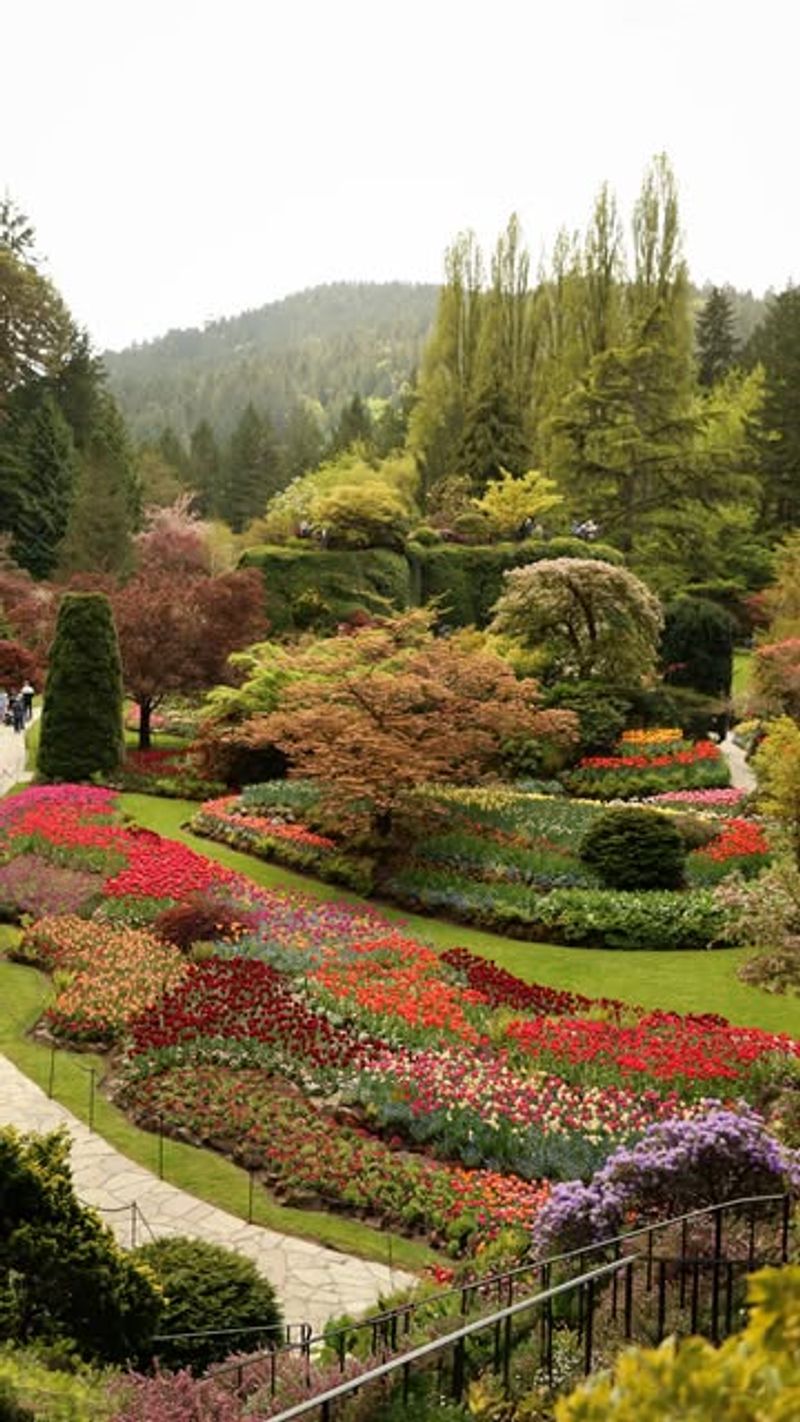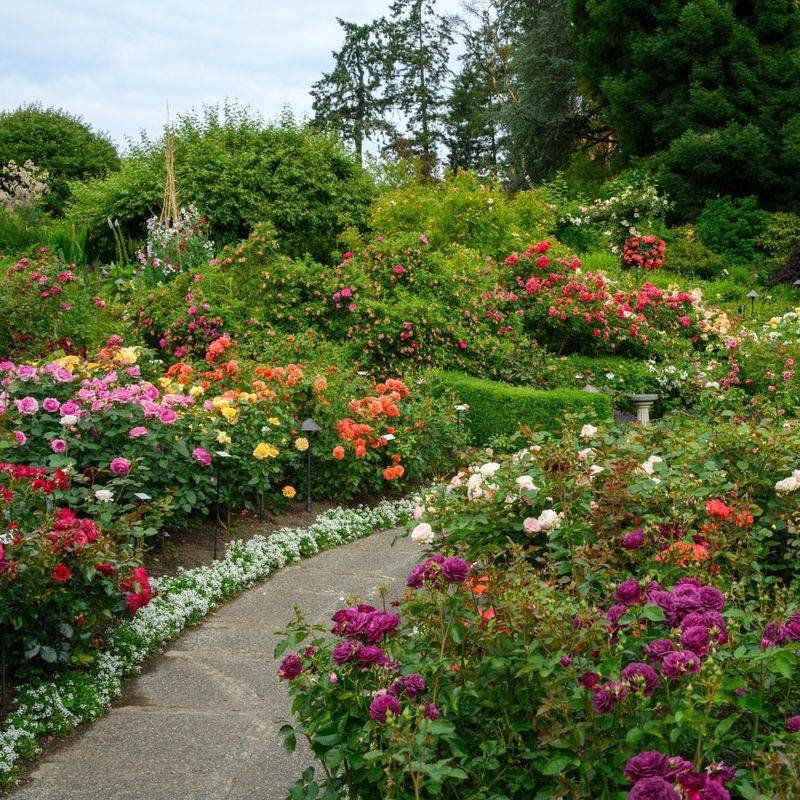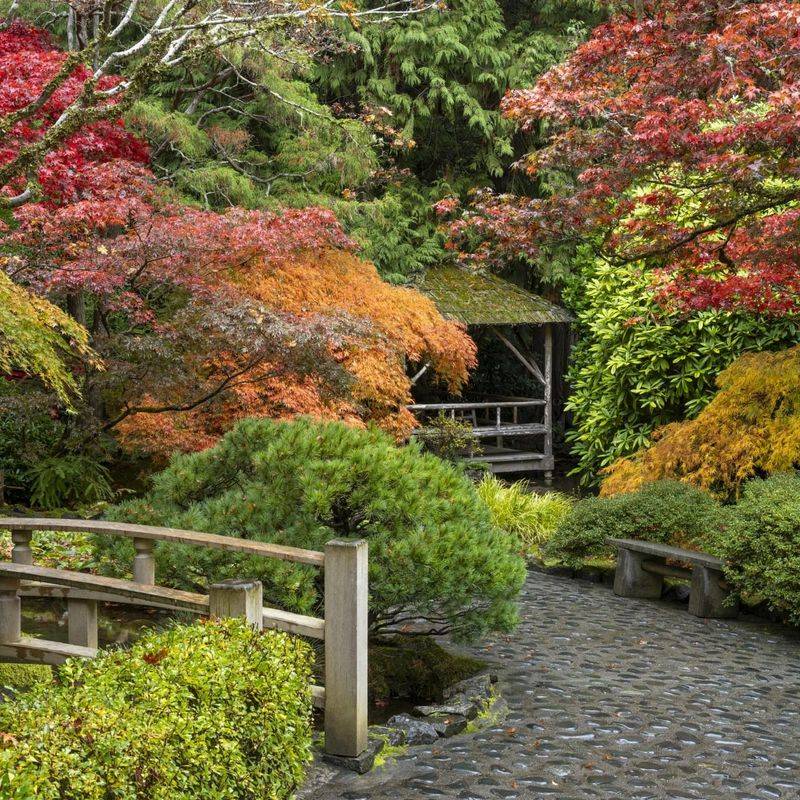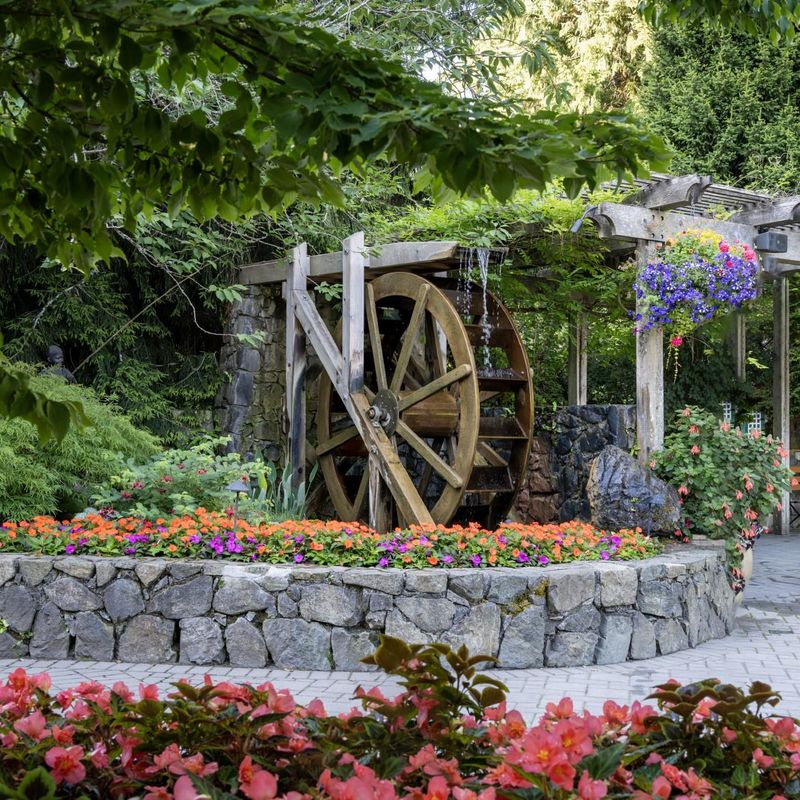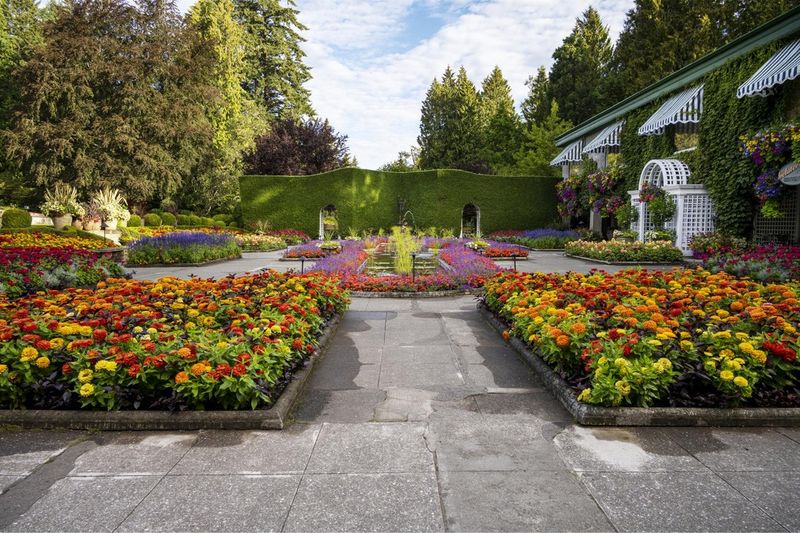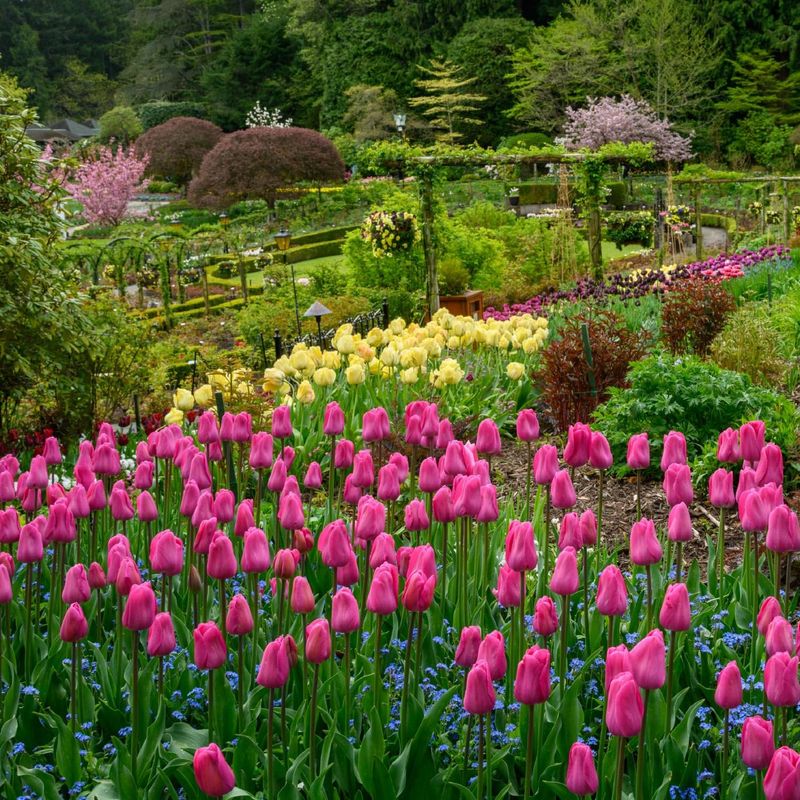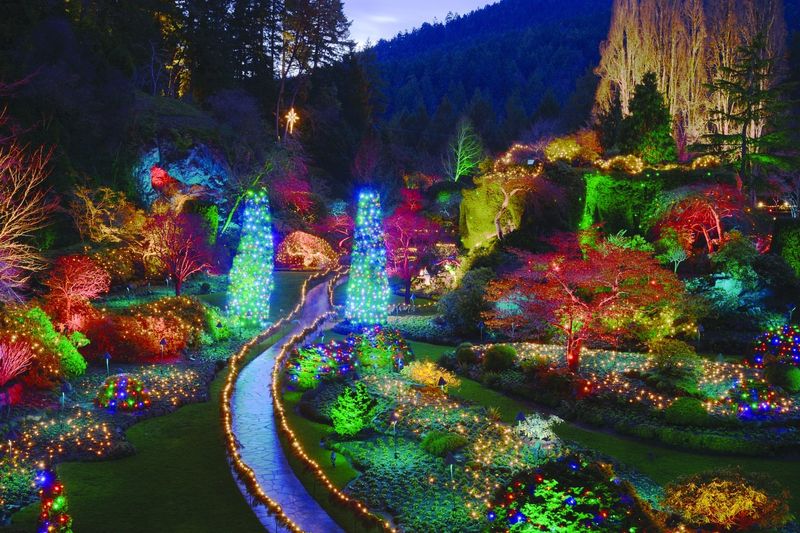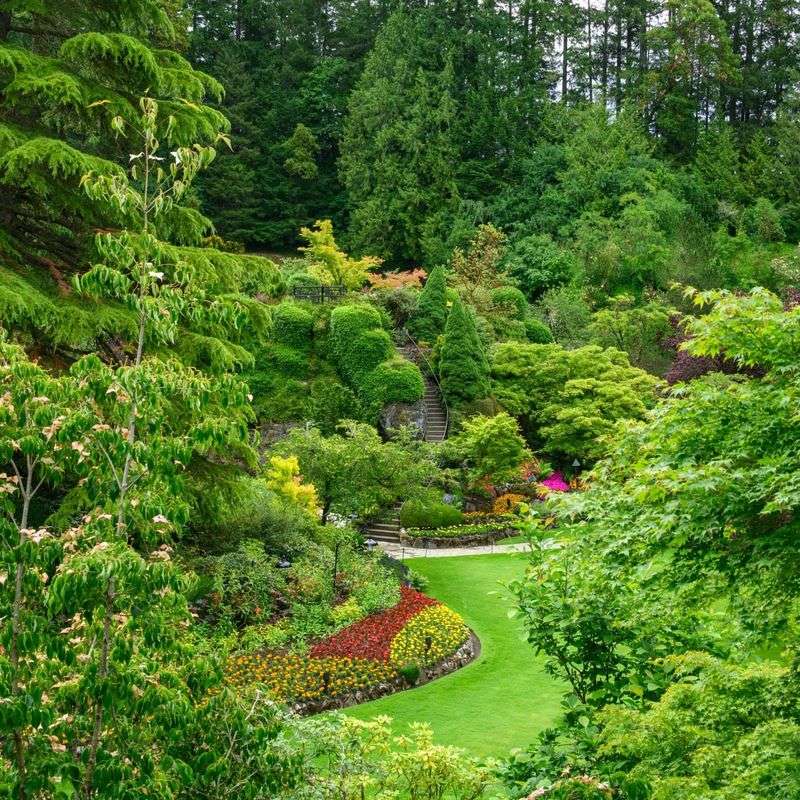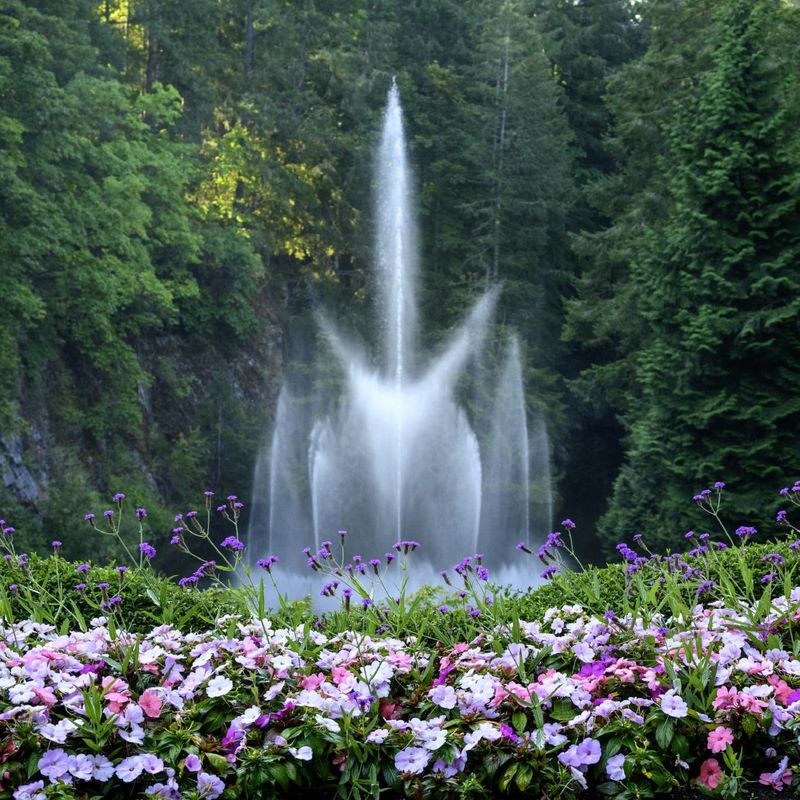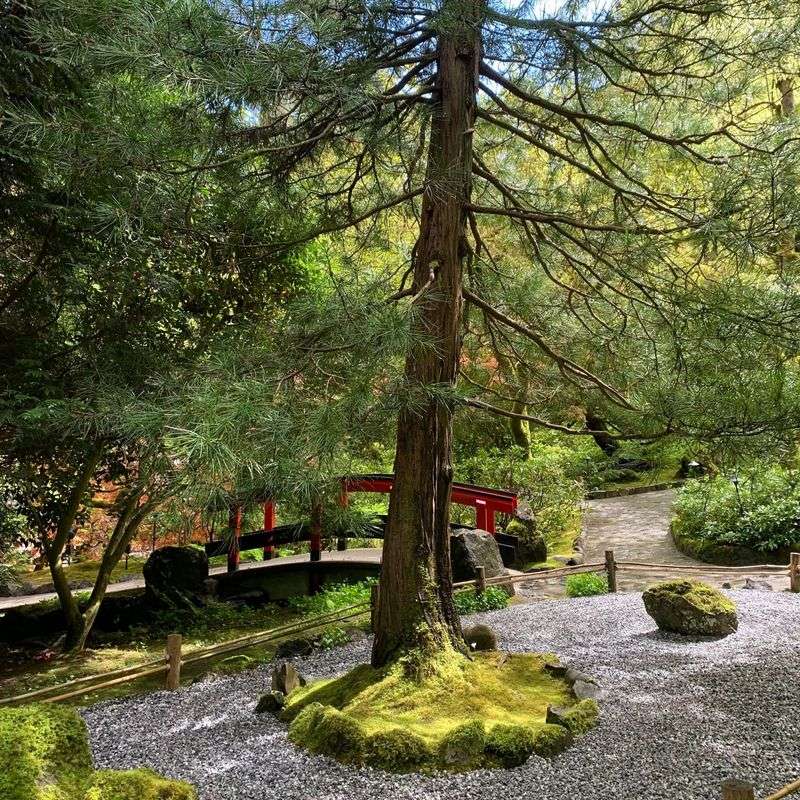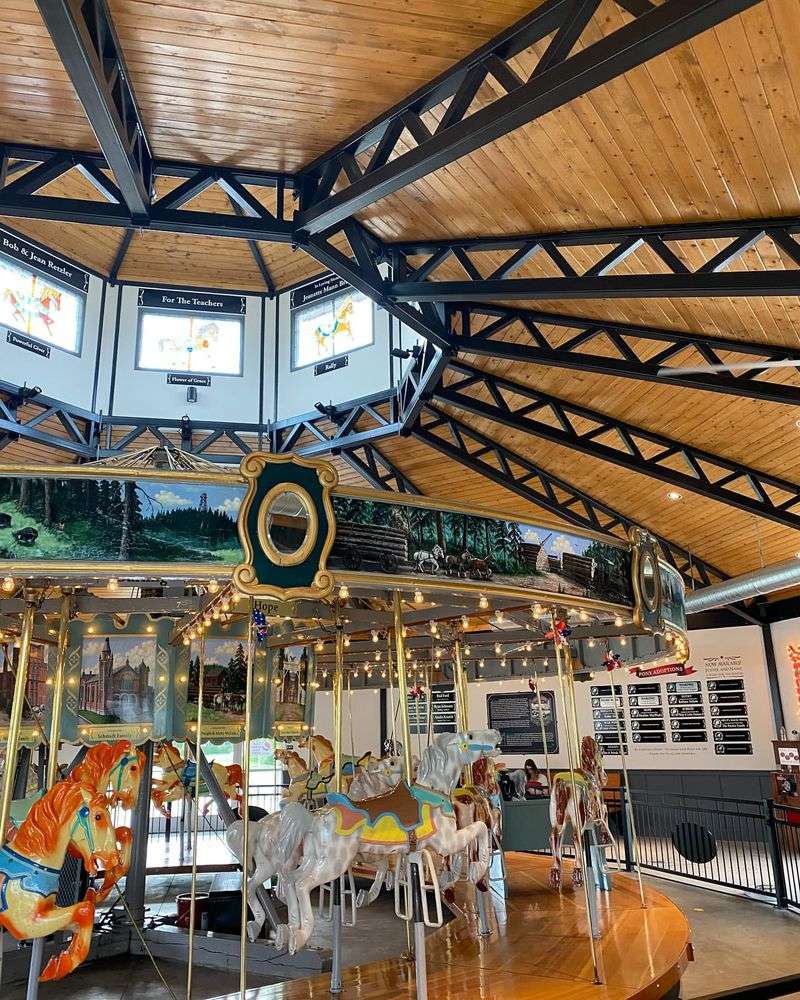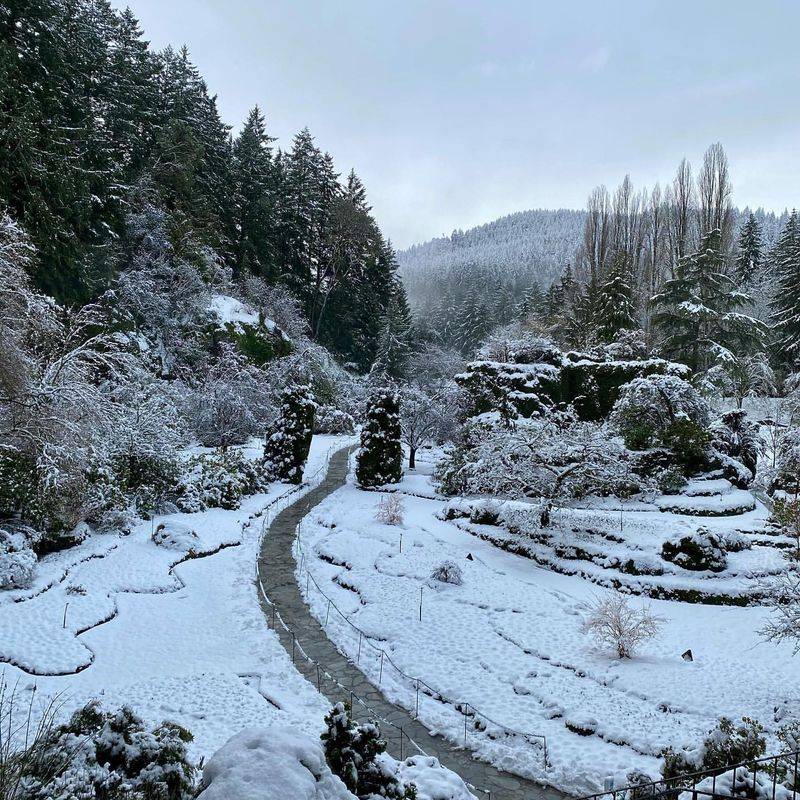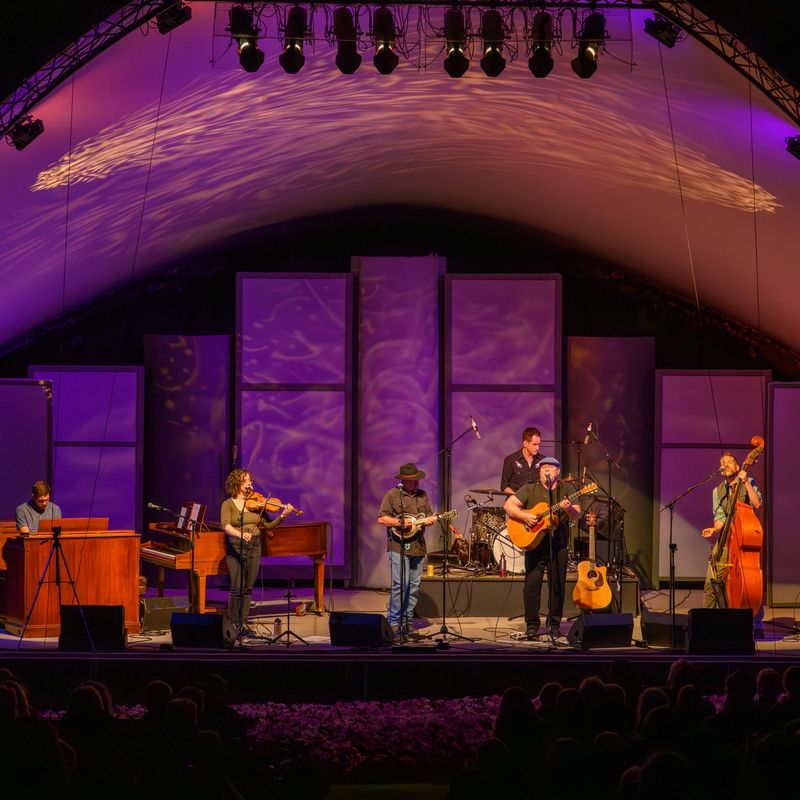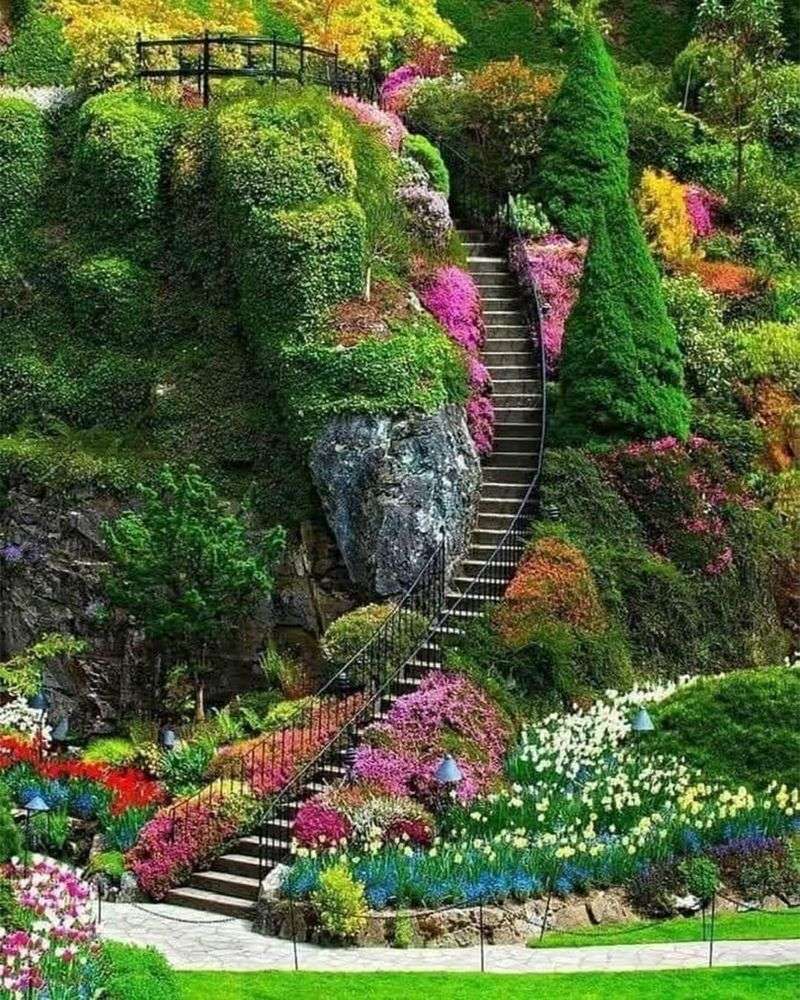Nestled on Vancouver Island in Canada, Butchart Gardens transforms an abandoned limestone quarry into a breathtaking floral wonderland. Once an industrial eyesore, Jennie Butchart’s vision has blossomed into one of the world’s premier garden attractions, welcoming over a million visitors annually.
The gardens represent an incredible story of restoration, beauty, and the power of nature to reclaim what humans have discarded.
1. From Barren Quarry to Blooming Paradise
The story of Butchart Gardens begins with cement production, not flowers. When the limestone quarry owned by Robert Butchart was depleted in the early 1900s, his wife Jennie saw potential in the ugly pit.
Rather than leave it abandoned, she envisioned transforming the industrial scar into something beautiful. Soil was brought in by horse and cart, and Jennie personally planted the first flowers that would eventually grow into the spectacular Sunken Garden we see today.
2. Jennie Butchart’s Remarkable Vision
Behind every great garden stands a passionate gardener. Jennie Butchart, born in Toronto in 1866, had no formal horticultural training but possessed boundless creativity and determination.
She traveled the world collecting rare plants and design ideas, often dangling over quarry walls in a bosun’s chair to plant ivy by hand. Her personal dedication transformed a family eyesore into a national treasure that has outlived her by generations.
3. Five Distinct Garden Styles
Walking through Butchart Gardens feels like traveling around the world. The property features five distinct garden styles, each with its own character and plant palette.
The dramatic Sunken Garden occupies the former quarry. The serene Japanese Garden slopes down to the sea. The Italian Garden replaced the family’s tennis court. The fragrant Rose Garden dazzles with color and scent. The Mediterranean Garden showcases plants that thrive in dry conditions.
4. Million-Dollar Restoration Efforts
Maintaining paradise doesn’t come cheap. The Butchart family and subsequent owners have invested millions in restoration and preservation efforts over the decades.
Major projects include rebuilding the original Japanese Garden lanterns and bridges, restoring the Rose Carousel pavilion, and implementing sustainable water management systems. Every winter, teams work tirelessly replacing plants, repairing structures, and preparing for the next season’s display.
5. A Century of Continuous Family Ownership
Unlike many historic gardens that transition to government or trust management, Butchart Gardens remains family-owned after more than 100 years. The garden has passed through four generations of the Butchart family.
Great-granddaughter Robin-Lee Clarke currently oversees operations, maintaining family traditions while introducing modern innovations. This continuity of vision helps explain why the gardens maintain their intimate, personal character despite their international fame.
6. Over 900 Plant Varieties on Display
Plant diversity at Butchart Gardens staggers the imagination. Gardeners maintain more than 900 varieties of plants, from common annuals to rare exotic specimens.
The collection includes 26 greenhouses worth of plants grown from seeds and cuttings. Each season brings new displays – spring features over 300,000 bulbs, summer showcases annuals and perennials, fall celebrates chrysanthemums and autumn foliage, while winter highlights hardy evergreens and special indoor displays.
7. Secret Underground Irrigation System
Beneath the perfect blooms lies an engineering marvel. Butchart Gardens employs a sophisticated underground irrigation system that delivers precise amounts of water to different garden zones.
Installed during major renovations in the 1970s, the system includes miles of pipes, computer-controlled valves, and moisture sensors. This hidden infrastructure allows gardeners to maintain lush displays even during summer dry spells while conserving water through targeted application rather than wasteful overhead spraying.
8. Seasonal Color Rotation Strategy
The gardens never look exactly the same twice thanks to an intricate plant rotation strategy. Garden designers plan color schemes and plant combinations years in advance.
When one display fades, another is ready to take its place. Over one million bedding plants in 900 varieties are used annually to create these ever-changing tapestries. The garden’s signature hanging baskets alone contain up to 25 different plant varieties each and are changed completely five times per year.
9. Nighttime Illumination Spectacle
As twilight falls, Butchart Gardens transforms into a magical wonderland. Thousands of carefully placed lights illuminate fountains, trees, and pathways, creating an entirely different garden experience.
The lighting design enhances the natural beauty rather than overwhelming it. Different colored lights bring out the subtle hues of flowers and foliage. The illumination tradition began in the 1950s with Ross Butchart’s installation of the first garden lighting system and has evolved into a sophisticated artistic display.
10. National Historic Site Recognition
In 2004, the Canadian government designated Butchart Gardens as a National Historic Site, recognizing its cultural significance. This status acknowledges both the garden’s extraordinary beauty and its historical importance.
The designation celebrates Jennie Butchart’s pioneering environmental reclamation work, transforming an industrial wasteland into a place of beauty decades before environmental restoration became fashionable. The gardens represent one of Canada’s earliest and most successful examples of industrial land rehabilitation.
11. The Famous Dancing Fountains
At the heart of the Sunken Garden stands Ross Fountain, a kinetic water feature that performs choreographed displays throughout the day. Installed in 1964 to celebrate the garden’s 60th anniversary, the fountain was designed by grandson Ian Ross.
Its 70 water jets can create patterns reaching up to 70 feet high, all synchronized to music during special evening shows. The fountain’s basin sits in the deepest part of the former quarry, symbolically transforming the industrial pit into a source of beauty.
12. Annual Flower Count: 1 Million+ Plants
The scale of planting at Butchart Gardens boggles the mind. Gardeners plant over one million bedding plants annually to create continuous displays from March through October.
Spring alone requires 300,000 bulbs, including 100,000 tulips in 120 varieties. Summer displays use 650,000 flowering annuals. The gardens maintain 26 greenhouses covering 2 acres to produce most plants on-site, ensuring quality control and the ability to grow unusual varieties not commercially available.
13. Japanese Garden’s Authentic Design
The Japanese Garden at Butchart offers authentic Asian tranquility. Created between 1906-1907, it’s one of North America’s oldest authentic Japanese gardens, designed by Isaburo Kishida, a renowned landscape architect from Yokohama.
Traditional elements include a torii gate, stone lanterns, bridges spanning streams, and carefully pruned trees. The garden follows principles of Japanese design with winding paths revealing new vistas at every turn, creating the illusion of expansive space within its relatively small area.
14. Carousel with Hand-Carved Figures
In 2009, Butchart Gardens added an unexpected attraction – a magnificent hand-carved wooden carousel. This Rose Carousel features 30 animals and chariots, each meticulously carved and painted by traditional craftsmen.
Unlike modern carousel figures, these are created using old-world techniques with real gold leaf accents. Located in a specially designed pavilion, the carousel operates year-round. It represents the garden’s commitment to preserving traditional craftsmanship alongside horticultural excellence.
15. Sustainable Water Management Practices
Behind the scenes, Butchart Gardens implements cutting-edge water conservation techniques. The gardens capture rainwater from buildings and pathways, storing it in underground reservoirs for irrigation use.
Computer-controlled drip systems deliver precise amounts of water to each plant zone based on weather conditions and soil moisture readings. Drought-tolerant plant selections reduce water demands in appropriate areas. These sustainable practices allow the gardens to maintain lush displays while minimizing environmental impact.
16. Winter Garden’s Unexpected Beauty
While most famous for summer blooms, Butchart Gardens offers surprising winter beauty. Garden designers have carefully selected plants for winter interest – witch hazels with spidery yellow blooms, hellebores nodding in frosty beds, and vibrant winter berries.
The Japanese Garden takes on a serene minimalist beauty with its structural elements revealed. Indoor displays in the historical residence feature tropical plants and forced bulbs. December brings the Magic of Christmas celebration with thousands of lights and seasonal decorations.
17. Summer Concert Series Tradition
Music fills the summer air at Butchart Gardens during their long-running concert series. Every evening from June through September, the Concert Lawn stage hosts performances ranging from classical orchestras to jazz ensembles and folk groups.
Visitors bring blankets to sit on the expansive lawn surrounded by flowers. The tradition began in 1953 when Ian Ross introduced music to enhance the visitor experience. Saturday nights culminate with spectacular fireworks choreographed to music, visible across the gardens’ night sky.
18. Hollywood’s Favorite Film Location
The cinematic beauty of Butchart Gardens has attracted filmmakers for decades. The gardens have appeared in numerous movies, television shows, and commercials, often standing in for magical or otherworldly settings.
Production companies value the perfectly maintained landscapes that require minimal set dressing. Famous productions filmed here include several Hallmark movies, fantasy series, and Japanese anime that used the gardens as inspiration for animated scenes. Special filming occurs during early morning hours before the gardens open to visitors.


